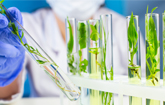DUBLIN, July 13, 2022 /PRNewswire/ -- The "Global Induced Pluripotent Stem Cell (iPSC) Industry Report, 2022" report has been added to ResearchAndMarkets.com's offering.
Since the discovery of induced pluripotent stem cell (iPSC) technology in 2006, significant progress has been made in stem cell biology and regenerative medicine. New pathological mechanisms have been identified and explained, new drugs identified by iPSC screens are in the pipeline, and the first clinical trials employing human iPSC-derived cell types have been initiated.
iPSCs can be used to explore the causes of disease onset and progression, create and test new drugs and therapies, and treat previously incurable diseases.
- Cell Therapy:
iPSCs are being explored in a diverse range of cell therapy applications for the purpose of reversing injury or disease. - Disease Modelling:
By generating iPSCs from patients with disorders of interest and differentiating them into disease-specific cells, iPSCs can effectively create disease models "in a dish." - Drug Development and Discovery:
iPSCs have the potential to transform drug discovery by providing physiologically relevant cells for compound identification, target validation, compound screening, and tool discovery. - Personalized Medicine:
The use of techniques such as CRISPR enable precise, directed creation of knock-outs and knock-ins (including single base changes) in many cell types. Pairing iPSCs with genome editing technologies is adding a new dimension to personalized medicine. - Toxicology Testing:
iPSCs can be used for toxicology screening, which is the use of stem cells or their derivatives (tissue-specific cells) to assess the safety of compounds or drugs within living cells.
Other applications of iPSCs include their use as research products, as well as their integration into 3D bioprinting, tissue engineering, and clean meat production. Technology allowing for the mass-production and differentiation of iPSCs in industrial-scale bioreactors is also advancing at breakneck speed.
iPSC Derived Clinical Trials
The first clinical trial using iPSCs started in 2008, and today, that number has surged worldwide. Most of the current clinical trials do not involve the transplant of iPSCs into humans, but rather, the creation and evaluation of iPSC lines for clinical purposes. Within these trials, iPSC lines are created from specific patient populations to determine if these cell lines could be a good model for a disease of interest.
The therapeutic applications of induced pluripotent stem cells (iPSCs) have also surged in recent years. Since the discovery of iPSCs in 2006, it took only seven years for the first iPSC-derived cell product to be transplanted into a human patient in 2013. Since then, iPSC-derived cells have been used within a rapidly growing number of preclinical studies, physician-led studies, and formal clinical trials worldwide.
Key Topics Covered:
1. Report Overview
2. Introduction
3. Current Status of iPSC Industry
3.1 Progress Made in Autologous Cell Therapy Using iPSCs
3.2 Manufacturing Timeline for Autologous iPSC-Derived Cell Products
3.3 Cost of iPSC Production
3.4 Automation in iPSC Production
3.5 Allogeneic iPSCs Gaining Momentum
3.6 Share of iPSC-Based Research Within the Overall Stem Cell Industry
3.7 Major Focus Areas of iPSC Companies
3.8 Commercially Available iPSC-Derived Cell Types
3.9 Relative Use of iPSC-Derived Cell Types in Toxicology Testing Assays
3.10 Currently Available iPSC Technologies
4. History of Induced Pluripotent Stem Cells (iPSCs)
5. Research Publications on iPSCs
6. iPSC: Patent Landscape Analysis
6.1 Legal Status of iPSC Patents
6.2 Patents by Assignee Organization Type
6.3 Ownership of Patent Families by Assignee Type
6.4 Top Inventors of iPSC Patents
6.5 Top Ten iPSC Inventors
6.6 Most Cited Five iPSC Patents
6.7 Leading Patent Filing Jurisdictions
6.8 Number of Patent Families by Year of Filing
6.9 Patents Representing Different Disorders
6.10 iPSC Patents on Preparation Technologies
6.11 Patents on Cell Types Differentiated from iPSCs
6.12 Patent Application Trends Disease-Specific Technologies
7. iPSC: Clinical Trial Landscape
7.1 Literature and Database Search
7.2 Number of iPSC Clinical Trials by Year
7.3 iPSC Study Designs
7.4 iPSC-Based Clinical Trials With Commercialization Potential
8. Research Funding for iPSCs
8.1 Value of NIH Funding for iPSC Research
8.2 Partial List of NIH Funded iPSC Research Projects in 2022
9. M&A, Collaborations & Funding Activities in iPSC Sector
10. Generation of Induced Pluripotent Stem Cells: An Overview
10.1 Reprogramming Factors
10.2 Integrating iPSC Delivery Methods
10.3 Non-Integrative Delivery Systems
10.4 Comparison of Delivery Methods for Generating iPSCs
10.5 Genome Editing Technologies in iPSC Generation
11. Human iPSC Banking
11.1 Cell Sources for iPSC Banking
11.2 Reprogramming Methods Used in iPSC Banking
11.3 Factors Used in Reprogramming in Different Banks
11.4 Workflow in iPSC Banks
11.5 Existing iPSC Banks
12. Biomedical Applications of iPSCs
12.1 iPSCs in Basic Research
12.2 iPSCs in Drug Discovery
12.3 iPSCs in Toxicology Studies
12.4 iPSCs in Disease Modeling
12.5 iPSCs in Cell-Based Therapies
12.6 Other Novel Applications of iPSCs
12.7 iPSCs in Animal Conservation
13. Market Overview
Companies Mentioned
- Accellta
- Addgene, Inc.
- Allele Biotechnology, Inc.
- Alstem, Inc.
- Altos Labs
- Ams Biotechnology Ltd. (Amsbio)
- Aspen Neuroscience, Inc.
- Astellas Pharma, Inc.
- Avery Therapeutics
- Axol Bioscience Ltd.
- Bit.Bio
- Bluerock Therapeutics
- Brainxell
- Brooklyn Immuno Therapeutics
- Catalent Biologics
- Cellaria
- Cellgenix, GmbH
- Cellino Biotech
- Cellular Engineering Technologies (Cet)
- Celogics, Inc.
- Censo Biotechnologies, Ltd.
- Century Therapeutics, Inc.
- Citius Pharmaceuticals, Inc.
- Clade Therapeutics
- Creative Bioarray
- Curi Bio
- Cynata Therapeutics Ltd.
- Cytovia Therapeutics
- Others
For more information about this report visit https://www.researchandmarkets.com/r/o1iz1o
Media Contact:
Research and Markets
Laura Wood, Senior Manager
[email protected]
For E.S.T Office Hours Call +1-917-300-0470
For U.S./CAN Toll Free Call +1-800-526-8630
For GMT Office Hours Call +353-1-416-8900
U.S. Fax: 646-607-1907
Fax (outside U.S.): +353-1-481-1716
Logo: https://mma.prnewswire.com/media/539438/Research_and_Markets_Logo.jpg
SOURCE Research and Markets

WANT YOUR COMPANY'S NEWS FEATURED ON PRNEWSWIRE.COM?
Newsrooms &
Influencers
Digital Media
Outlets
Journalists
Opted In





Share this article